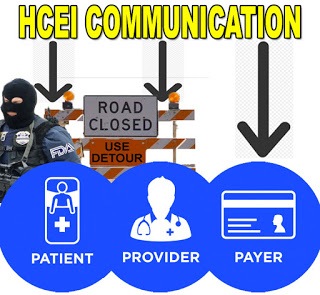At the November, 2016, FDA public hearing on off-label promotion, representatives of the drug industry made a case for allowing companies to inform payers of off-label uses of their products.
Payers “play such a gatekeeping role with respect to patients,” said Kellie Combs, an attorney for Ropes & Gray, who testified at the hearing on behalf of the Medical Information Working Group. “There’s a real interest in getting information to payers as soon as possible.”
In addition, certain types of data, like demonstrating a drug’s use in subpopulations and sharing pharmacoeconomic data, are examples of information that do not meet the FDA’s criteria but are still valuable to payers, said Dr. Sandra Milligan, SVP of global regulatory affairs and clinical safety at Merck (see MM&M report here).
At the time, I asked “Will FDA Open a Path to Off-Label Promotion from Pharma to Payers & Not Patients or Providers?” (op cit). It appears that the path is now opening up, at least for drug companies to communicate “health care economic information” (HCEI) regarding their prescription drugs to payors. This opening is laid out in new draft guidance form the FDA titled “Drug and Device Manufacturer Communications With Payors, Formulary Committees, and Similar Entities – Questions and Answers” (find it here).
Here are some excerpts from this guidance…
This guidance provides answers to common questions regarding firms’ communication of health care economic information (HCEI) regarding their prescription drugs to payors, formulary committees, or other similar entities with knowledge and expertise in the area of health care economic analysis (collectively referred to as payors). This guidance also addresses common questions relating to dissemination of information about investigational drugs and devices (medical products) to payors before FDA approval or clearance of such products.
Payors seek a range of information on effectiveness, safety, and cost-effectiveness of approved prescription drugs, including information from firms, to help support their drug selection, formulary management, and/or coverage and reimbursement decisions on a population basis. Often, this information differs from and can be provided in addition to the information FDA reviews in order to make approval decisions. Because coverage and reimbursement decisions by payors impact a large number of patients, FDA believes it is essential that information provided by firms to payors about their drugs be truthful and non-misleading.
Payors have also indicated that due in part to their need to, in some situations, plan for and make coverage and reimbursement decisions far in advance of the effective date of such decisions, they are also interested in receiving information from firms about medical products that are still under investigation or review by FDA. For the reasons described above, it is essential that information provided by firms about their investigational products be truthful and non-misleading.
What is Health care economic information (HCEI)?
HCEI is defined as “any analysis (including the clinical data, inputs, clinical or other assumptions, methods, results, and other components underlying or comprising the analysis) that identifies, measures, or describes the economic consequences, which may be based on the separate or aggregated clinical consequences of the represented health outcomes, of the use of a drug.
HCEI shall not be considered false or misleading if, among other things, it is “based on competent and reliable scientific evidence” (CARSE).
A balanced and complete presentation includes material information such as the following:
- ****Conspicuous and Prominent Statement Describing Material Differences from the FDA-approved labeling **** Furthermore, firms should not misleadingly represent that the clinical assumptions that vary from the FDA-approved labeling have been found by FDA to be safe and effective. [This is the “off-label” communications path I mentioned above.]
- HCEI should include a statement regarding the FDA-approved indication of the drug and be accompanied by the most current FDA-approved labeling.
- Disclosure of Omitted Studies or Data Sources
- Risk Information: HCEI should disclose important risk information associated with the approved use of the drug and disclose any additional risk information related to clinical assumptions in economic analyses that vary from the FDA-approved labeling (e.g., risks observed in a particular patient subgroup).
- Financial/Affiliation Biases: HCEI should disclose potential financial or affiliation biases, such as the disseminating firm’s role in funding underlying research or in drafting underlying publications or presentations or the names of any authors of studies or analyses who received compensation from the firm or who had a significant financial interest in the firm, to the extent reasonably known by the firm at the time of dissemination.









![6 Digital Tools at the Center of Healthcare Digitalization [INFOGRAPHIC]](http://ec2-54-175-84-28.compute-1.amazonaws.com/pharma-mkting.com/wp-content/uploads/2021/04/6DigitalTools_600px-100x70.jpg)




